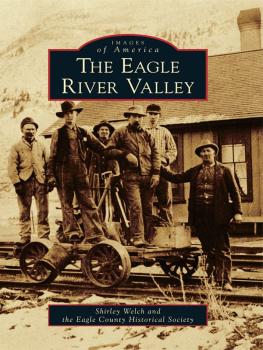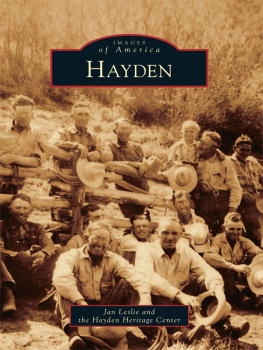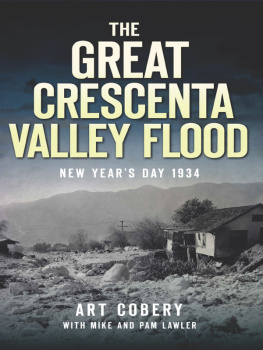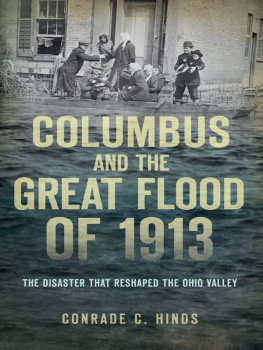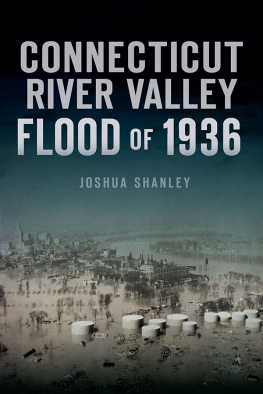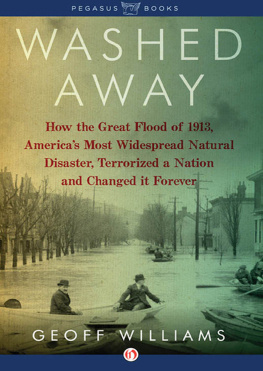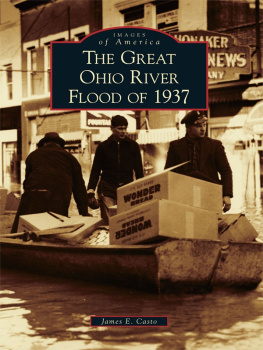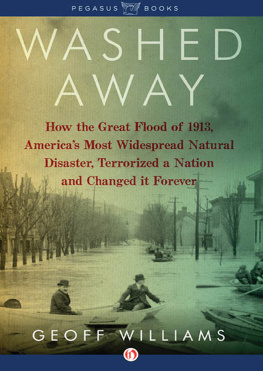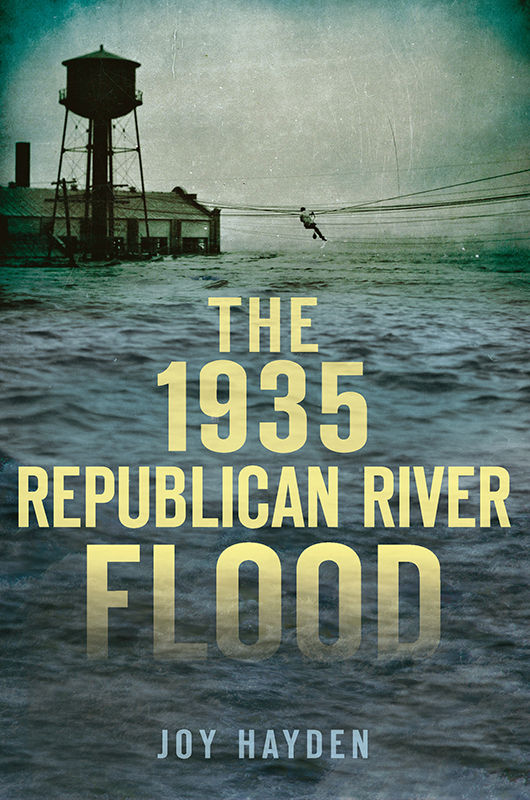

Published by The History Press
Charleston, SC 29403
www.historypress.net
Copyright 2015 by Joy A. Hayden
All rights reserved
Front cover : photo by Don Gibson, courtesy of the Museum of the High Plains, McCook, Nebraska.
First published 2015
e-book edition 2015
ISBN 978.1.62585.362.2
Library of Congress Control Number: 2014956403
print edition ISBN 978.1.62619.855.5
Notice: The information in this book is true and complete to the best of our knowledge. It is
offered without guarantee on the part of the author or The History Press. The author and
The History Press disclaim all liability in connection with the use of this book.
All rights reserved. No part of this book may be reproduced or transmitted in any form
whatsoever without prior written permission from the publisher except in the case of brief
quotations embodied in critical articles and reviews.
Farmers and villagers say that after the drought come two other dreaded Riders of the Apocalypseflood and tornado .
McCook Daily Gazette, June 3, 1935

An attempt to rescue men trapped at the McCook Power Plant. Don Gibson .
This book is dedicated to all those who lost their lives during the 1935 Republican River flood .
CONTENTS
ACKNOWLEDGEMENTS
I became interested in the 1935 Republican River flood about a year before the seventy-fifth anniversary of the event in 2010. I spent many hours researching the flood in communities all along the river. I discovered that while several self-published books had been written, no recent account of the flood told the story from its beginning in Colorado and Kansas through its rampage in Nebraska to its final end in Kansas. I was fortunate to visit with many survivorssome of whom have since passed awaywho provided firsthand information about the event all along the river.
Marlene Harvey Wilmot provided a treasure-trove of information about the flood. If not for her efforts to document the flood, recount the memories of her fathers heroism and tell the stories of countless others who lived through the flood, most of their stories would never have been recorded. I have, with her permission, drawn extensively from her work and our conversations in the description of events recorded in these pages.
Special thanks to Lucille Edwards, Nancy McKenzie, Mary Sherk and Joseph Torrey, who lent me their photographs, many of which illustrate this volume. Mr. Torreys photos were from a collection he preserved taken by a local photographer named Webber, who photographed the flood in Alma, Naponee and Orleans, Nebraska. I am also deeply grateful to the many museums and historical societies along the river that so generously shared their knowledge of the flood and the stories and photos they had collected over the years. The Cheyenne County (Kansas) Museum and the Museum of the High Plains in McCook, Nebraska, shared both photographs and stories that were particularly helpful in piecing together the story of the flood.
I am deeply grateful to Scott Mentzer, Meteorologist in Charge, at the National Weather Service in Goodland, Kansas, who encouraged me to write this book and read through the many changes in the manuscript along the way to publication. The staff at the National Weather Service in Goodland, Kansas, not only provided detailed weather information about the event but also created an excellent 1935 Republican River Flood webpage with many more details about the weather conditions before, during and after the flood. This website is a treasure for anyone interested in knowing more about this event.
Many other contributors are listed in the back of this book. Although it is impossible to name all the people who helped in the making of this book, please know that although your name might not be mentioned, I appreciated all the help given me in preparing this manuscript. I regret any mistakes that might have occurred while collecting and transcribing the stories of the flood. Whether you shared your story, provided a picture for the photo collection or provided newspapers or other documents, I am deeply grateful for your help in telling this story.
INTRODUCTION
My God, save my babies! As the section of the roof on which she stood collapsed into frigid floodwaters, Frances Miller screamed these haunting words. Dale Miller, Francess brother-in-law, watched in horror from another section of the roof only a few feet away. He tossed his nephew Johnny into a tree. Clutching his niece, Nadine, he plunged into the debris-filled water and fought to make it to shore.
Meanwhile, Francess husband, Charles Miller, lay in town seriously ill. Frances had heard news of approaching high water earlier that day and chose to keep their six children at home on their farm near McCook, Nebraska, since they were also ill. She did not worry much about a flood. There were so many other things to worry about; the terrible drought and the struggle she and Charles had making a living for the family from day to day were more than enough to keep her occupied. She knew the Republican rose often in the spring, and it was more a nuisance than a danger most years. As dry as it had been for so many years, it was hard to believe there could be a flood.
Frances did not see the ten-foot wall of water headed for their house. She did not know that, within hours, her farm would be covered by a roaring river intent on taking the lives of all who huddled in her home. Those in her house that day included her children: Claudine; Charles Frances, called Johnny; Charlotte; Nadine; Virginia Mae; and Beverly, a tiny infant. Others adults in the house included Elizabeth Shook, Francess sister, who worked as a local schoolteacher; Fred Swanson; and Nels Nielson. Both men had taken shelter in her home after having been caught by surprise by the rising river as they checked on their cattle in the area.
Dale Miller, her brother-in-law, a father with five children of his own, realized the danger his brothers family faced when he saw the flood approaching McCook. He tried to think of a way to reach them. He hurried to the home of Clyde McKellip and asked to borrow his boat. Clyde did not know the Miller family well but decided impulsively to help Dale rescue his brothers family.
The two men rowed the small boat to the Miller house. They could see it being rapidly surrounded by rising water as they approached. They realized the broken oarlock on the boat made it useless for rescuing a large number of people in the flood, now coming in ever-rising waves. The men reached the house just as the water started coming inside.
Swanson, unable to swim, panicked and jumped into the damaged boat Dale and Clyde left tethered outside. It capsized, and he went under, screaming in terror while those trapped in the house watched in horror. Nielson also abandoned the group and swam outside to the dairy barn. He climbed on the roof just before the river tore it from its foundation and began to move the structure downstream.
Meanwhile, water poured in the windows of the house. Summoning strength he did not know he possessed, Dale stood on the bed in a back bedroom and broke through the ceiling to the attic. Clyde handed the children up to him, followed by Frances and Elizabeth. Elizabeth kept her purse with her, with her last paycheck from teaching school tucked carefully inside. Dale chopped another hole through the roof, and they all climbed outside.


